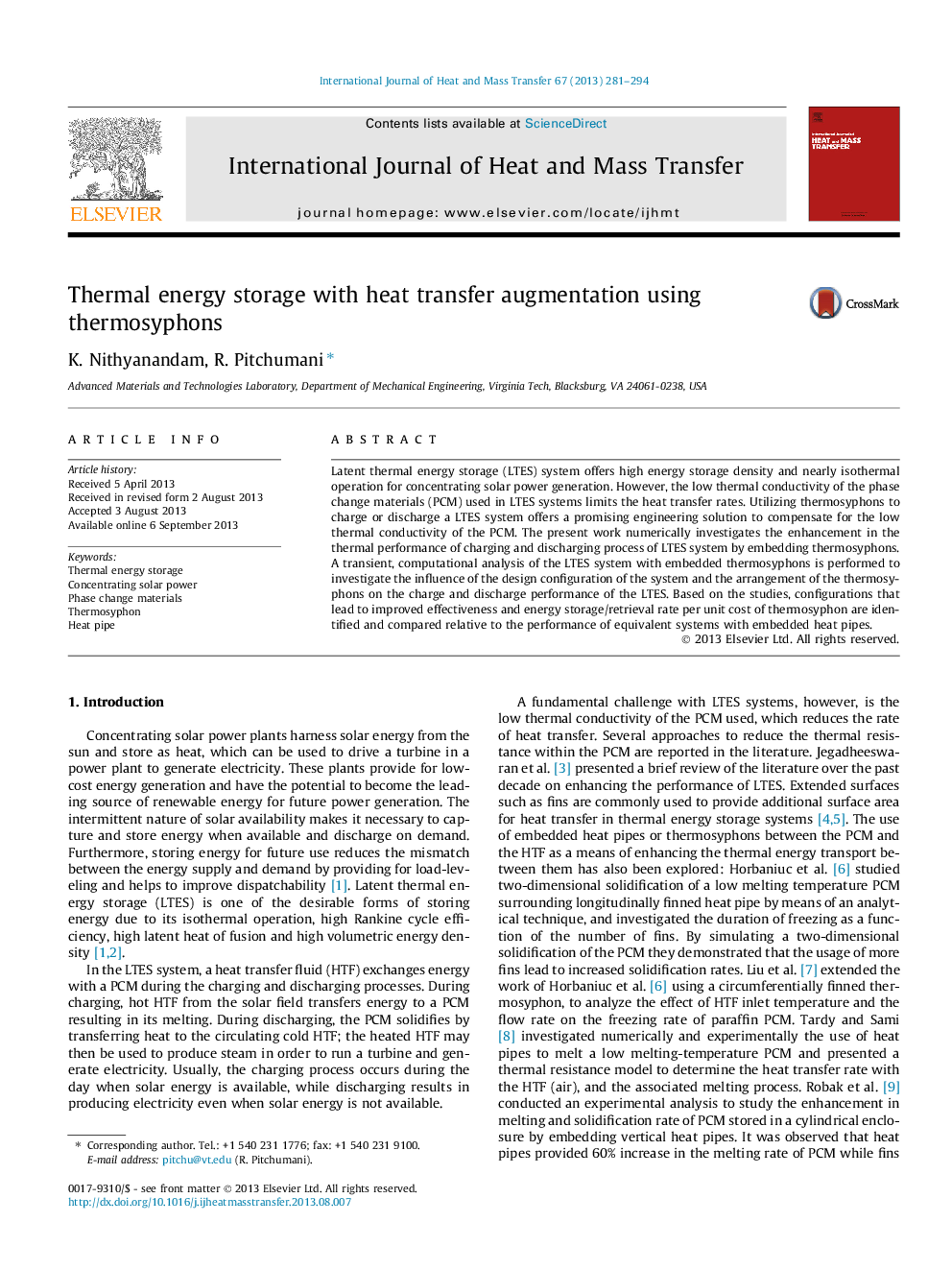| Article ID | Journal | Published Year | Pages | File Type |
|---|---|---|---|---|
| 657942 | International Journal of Heat and Mass Transfer | 2013 | 14 Pages |
Abstract
Latent thermal energy storage (LTES) system offers high energy storage density and nearly isothermal operation for concentrating solar power generation. However, the low thermal conductivity of the phase change materials (PCM) used in LTES systems limits the heat transfer rates. Utilizing thermosyphons to charge or discharge a LTES system offers a promising engineering solution to compensate for the low thermal conductivity of the PCM. The present work numerically investigates the enhancement in the thermal performance of charging and discharging process of LTES system by embedding thermosyphons. A transient, computational analysis of the LTES system with embedded thermosyphons is performed to investigate the influence of the design configuration of the system and the arrangement of the thermosyphons on the charge and discharge performance of the LTES. Based on the studies, configurations that lead to improved effectiveness and energy storage/retrieval rate per unit cost of thermosyphon are identified and compared relative to the performance of equivalent systems with embedded heat pipes.
Related Topics
Physical Sciences and Engineering
Chemical Engineering
Fluid Flow and Transfer Processes
Authors
K. Nithyanandam, R. Pitchumani,
